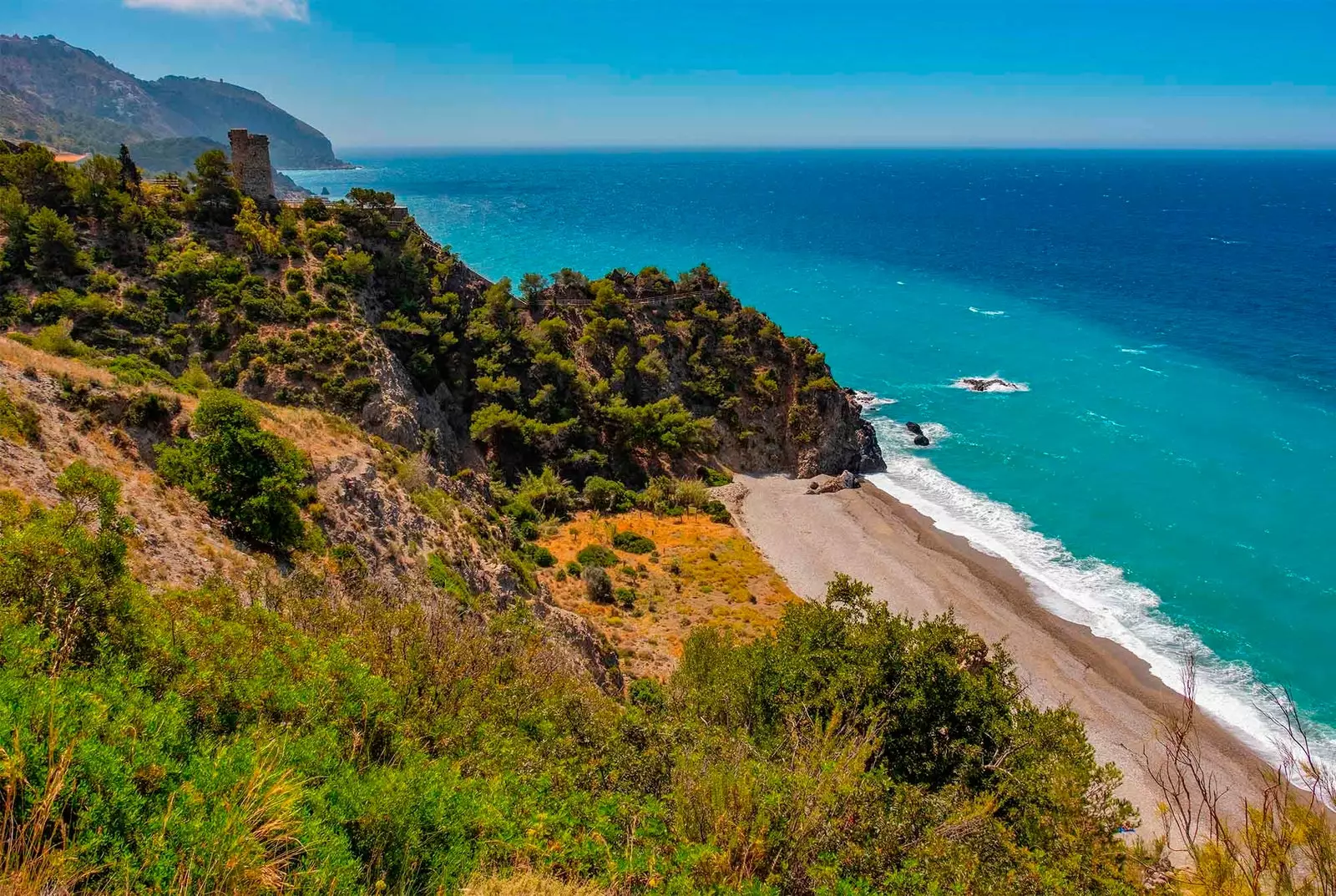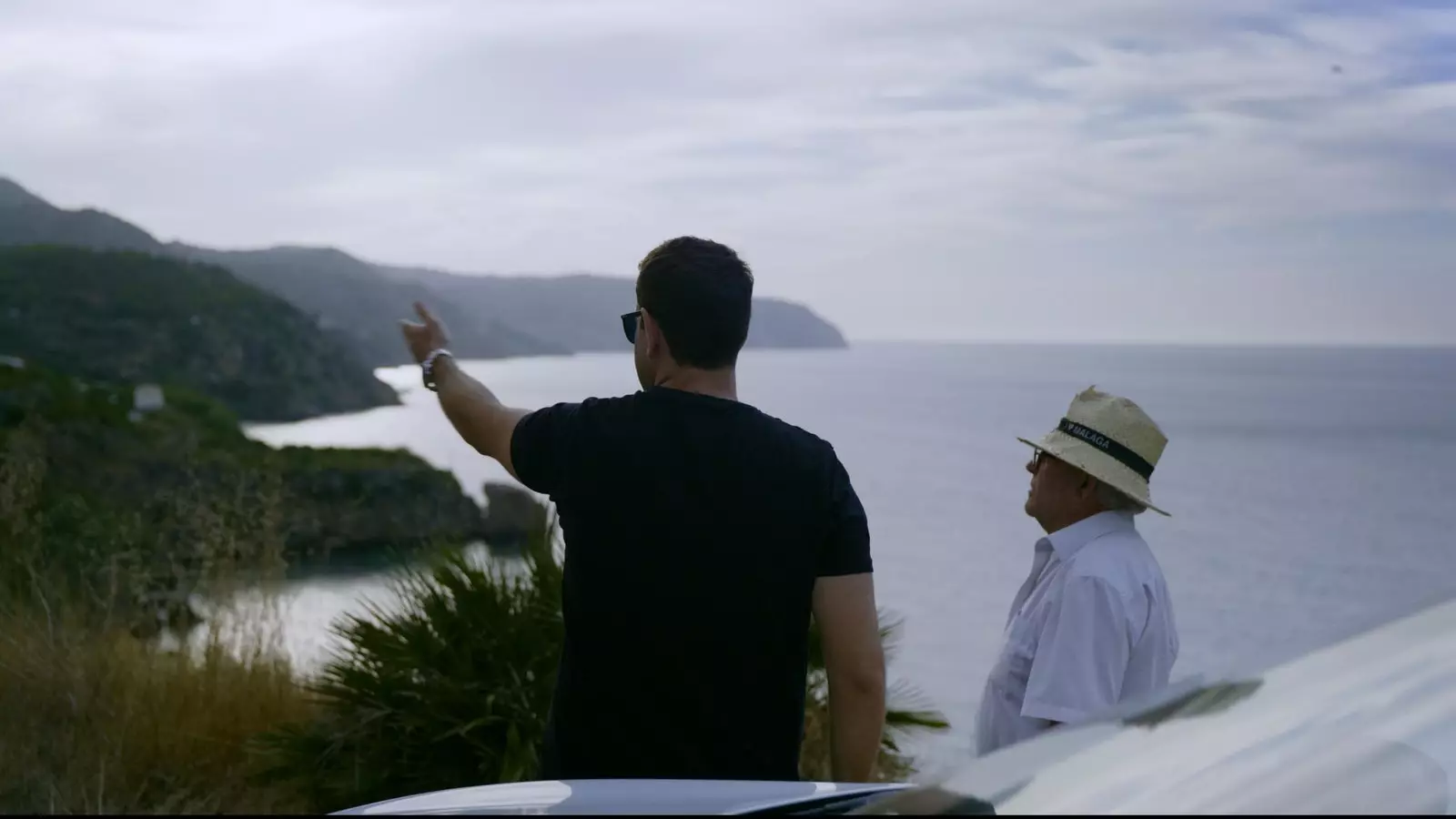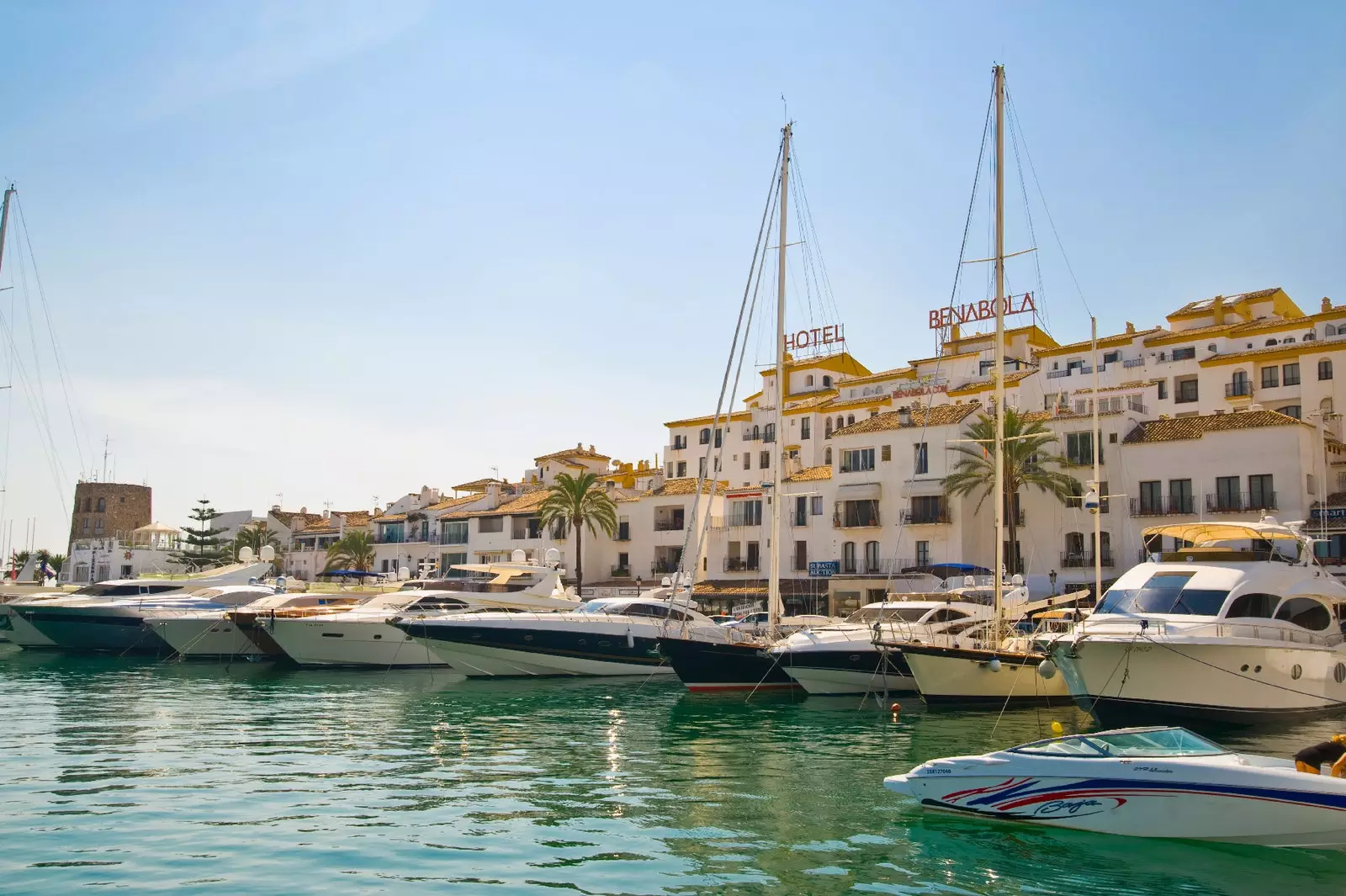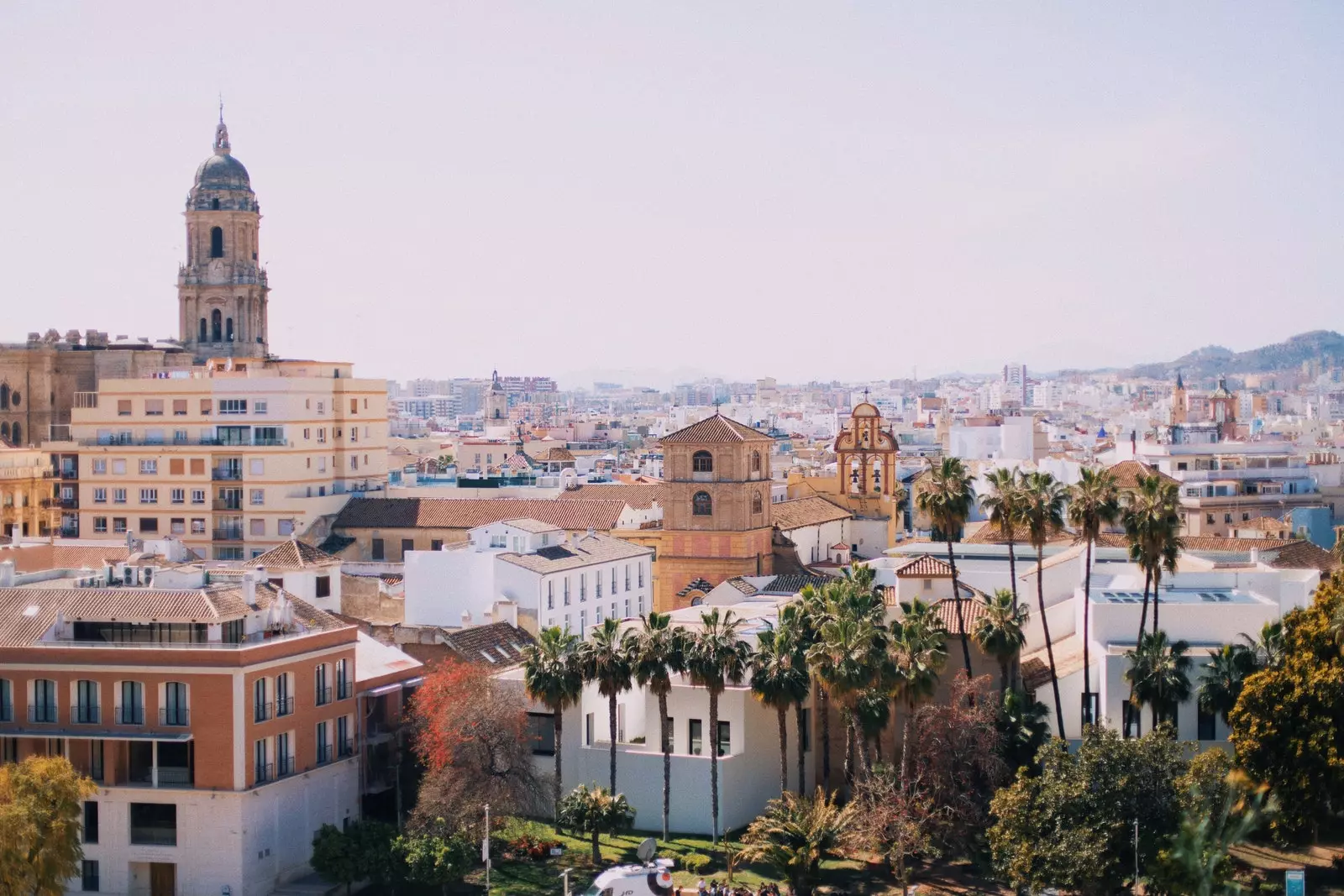
The cliffs of Maro, a landscape like no other
"Oh, look, the first thing, because they help us to live, which is the main thing, that before this was dead and now he has given life to the town ; and the second, because different customs are taken". The voice and the image is that of a woman interviewed on television. We do not know who she is, or for which channel she speaks. However, her opinion is the same as that route Malaga from cover to cover since, in the 60s, the tourist and urban boom completely changed the face of this province that, until then, had lived with its back to the sea... and that today does not count nor with a centimeter of coast free of speculation.
The testimony can be heard in the trailer for the documentary series For Sale, which develops, in five chapters, the impact of tourism-real estate development on the Costa del Sol and the struggle of the citizens to save what remains of habitable in it . The first episode, The Last Vergel, gives voice to the residents of Maro and Nerja, devastated by the forthcoming construction of a luxury hotel in what today it is an agrarian and protected land.
Theirs is a century-old fight that seems impossible in the 21st century: a marquis owns this land fertile by the sea, historically worked by settlers, as the farmers in the area are called. Subject to temporary and unfavorable rental contracts , those who cultivate do not even have the right to buy the soil in which their crops sink their roots.
It is they, the neighbors, and no one else, who have the leading role in the documentary: "Precisely because the voice of citizens is usually the least heard ", explains Daniel Natoli (A Costa del Sol, 2019), director of the project. " The stories that are imposed as hegemonic are usually constructed from the strata of power (politicians, businessmen, lobbies...). However, we wanted to make a series where people were listened to, with their language, their perceptions, their fears and its contradictions".
"I think it is easier to understand the intentions behind any urban project when you know first-hand how the people who live there live and what they think of it than when a politician or an expert explains it. There is a cleaner look , more transparent, that connects more directly with any viewer. we just we have decided to balance the asymmetry that we think there is currently in the construction of these stories, but, of course, without denying the complexity of the themes that are addressed".
IS THERE HOPE IN THE FACE OF THE FORCE OF URBAN SPECULATION?
The idea of recording the series stems from academic research that analyzes the different urban conflicts that occur along the Costa del Sol and the social resistance movements that try to prevent it. When Andalusian production companies Peripheria Films and Criocrea found out about the project, they knew they had to tackle it.
But is there really hope? do Can a handful of citizens stop such mammoth plans such as the construction of four towers thirty and forty stories high in the Carretera de Cádiz district, one of the most crowded in Europe? Or will they manage to turn those lands, which until a few years ago were used to house gasoline depots, into the urban forest that the city needs , as it will unravel in episode two?
Do you have signs of avoiding the lifting of a monstrous hotel-skyscraper in the middle of the modest profile of the port because neighbors and personalities like Elvira Lindo, Emilio Lledó, Rogelio López Cuenca or Miguel Ríos protest against it? Can this documentary series change something, or is it nothing more than the verification of five shipwrecks?
"Most of these plans take several years, and even decades, precisely because of the controversy they generate," explains Natoli. "In any case, focusing on these resistance movements is a good way to invite reflection on what kind of city and territory we want to inhabit . We need to build another type of imaginary to propose alternatives to the brick-tourism binomial that has been with us for more than 60 years. These social movements are like lines of flight that point to other realities, other possible worlds . Even if it's just for question what the word 'progress' or 'development' means I already think it's worth making documentaries around these movements".

In 'For sale', citizens have the floor
WHY IS MÁLAGA SOLD?
"It is not until the beginning of the 20th century when the beaches begin to have a spatial use for leisure . Until then, the towns and coasts were only 'inhospitable' places where poor people worked, basically fishing and building boats. In these places they lived in almost survival conditions, or simply, they were 'wild' territories", explains Fátima Gómez Sota, professor of Sociology at the European University.
"When the wealthy classes were discovering the attractiveness of these places for rest and health, they began to build residences, spas, etc, coexisting in this way fishermen and an elite of budding vacationers -who discover the benefits of a simple and quiet life compared to the modern life that was beginning to emerge in the cities-", continues the expert.
An example: Ricardo Soriano, Marquis of Ivanrey, bought a farm in Marbella in 1947, El Rodeo, which he converted into a modern hotel establishment. He himself received, above all, the French travelers who stopped on their trips to Morocco, but also other friends and relatives of the nobleman, who soon allowed themselves to be seduced by the beauty of that always sunny land , on whose shore the forests and the sea caressed.
One of them was the german prince max , Soriano's cousin, who fell in love with the paradisiacal enclave of an old estate and took it over, turning it into the Marbella Club, the longest-running hotel in the area, called change the way of life of that coastal town forever . “Tourism growth was so fast that Marbella, in 1964, already had 16 hotels , in addition to multiple residences, hostels and apartments, more than forty in number”, relates the Marbella historian Curro Machuca.

Many neighbors are opposed to the extension of Puerto Banús
Motivated by the strength of tourism, Marbella went from just over 10,000 inhabitants in 1950 to 80,600 in 1991, an increase of 703.82% promoted, above all, by immigrants from the Andalusian interior who exchanged hoes for jobs in the hotel industry. Then Jesús Gil arrived: “In 1991, a businessman who became president of Atlético de Madrid wanted brick with 5,000 homes the most international tourist city in Spain . He had 20,000 million pesetas in unsold flats and the best option to make money was to run for mayor. 'I became mayor to defend my heritage', he defended himself without embarrassment", published El Confidencial.
Today, the real estate scandals and the destruction of the natural coast of Marbella They are well known to all. But the neighbors are still on the warpath, this time, standing up to the expansion of the marina to accommodate cruise ships, addressed in chapter four of For Sale.
The same fate befell, with few differences, the entire coast of Malaga. "Usually, the territory is sold in exchange for votes and is bought with speculative interests. Almost always through the recurring promise of a supposed development and a handful of precarious jobs Natoli reflects.
"When all that speculation is given an open bar, What is lost, in the long term, is undoubtedly much greater than what is gained in the short term. . And you just have to take a look at the entire Costa del Sol and all the urban overcrowding of its coastline to understand it. or to the touristification of the historic center , functioning until recently more as a decoration than as a neighborhood. It has happened in Malaga, in Thailand, and in any destination that the tourism industry may consider attractive."

In the center of Malaga, there is no longer room for neighbors: everything is for tourism
"Is there a remedy for this? Well, honestly, I don't know, but I'm sure we need to rethink this model , even more so at a time of pandemic where the areas that clearly depended on a tourist monoculture have seen how fragile they can become if for any reason the destination stops working (an attack, a pandemic, or simply fashion). Raising these debates publicly should be almost a democratic obligation , even more so when the irreversible future of our cities or our coastline is at stake", concludes the filmmaker.
EVOLUTION OR INVOLUTION?
Returning to the accurate testimony of that lady with whom we opened the article, yes: "different customs are taken" when tourism colonizes a place. During those years of developmentalism, Torremolinos, for example, was international reference in LGBTQ+ tourism , an oasis for the country and for the world. Bibiana Fernández already said: "Spain was in black and white; Torremolinos was in color".
The writer confirmed James Albert Michener Pulitzer Prize winner, who described the former fishing village as "a haven where you can escape from the madness of the world, but it turns out to be a totally crazy haven."
To host your tourism of hundreds, Colossi rose by the seashore , drawing a grid of skyscrapers in which today there is no trace of the natural beaches that made even Hollywood fall in love with the place.
"I just showed the photo to my mother and she has known him like this (...). There was a lot of fields, many orchards . Unfortunately, nothing has been left", reads the Malaga History Facebook group. The photo: the calm sea, the kilometric beach surrounded by fields, gardens and small bush houses. In the middle, a gigantic building breaking the landscape : the mythical Hotel Pez Espada, recently built in 1959, through whose corridors figures such as Frank Sinatra, Ava Gardner, Sofía Loren, Charlton Heston, Sean Connery, Claudia Cardinale, Orson Welles, Ingrid Bergman, Ernest Hemingway or the Rolling Stones . The title of the user who shares it: "Glory and pride of Malaga's hospitality industry."
They were different times. Later, when the dozens of identical hotels filled the arena with cement, those immortal names never saw their hair again . As they explain in an article about the municipality in Filmand, mass tourism put an end to 'Torremolinos Chic'. " From bohemian to mediocrity in its most literal definition : the average Spaniard wanted to spend the summer in Torremolinos and the regime was delighted to show the world a postcard showing that Spain was not so dark. "Don't believe those legends that here we set up an 'auto de fe' to burn those who go around the city in 'shorts' or those who wear embarrassing 'bikini' on the beach," said the brochure Spain for you.
Under the image of Facebook the debate is generated: "This spectacular photo shows the beginning of the 'great disaster' of the destruction of the Malaga coast ", affirms a member. "Oh, the politicians and their friends, how much destruction they did and do on our coast." Another responds: " Was it necessary to leave it as it was and close the door to the development of our coast? Tell me, where to build?" And one more: "Thanks to that destruction, Malaga is what it is, because we live from tourism: those hotels have fed thousands of families ". The debate is the same for decades, since the first stone was raised on the coast.
"The tourist and urban boom of the 1960s was then perceived as a ray of light in a too dark Spain ", they explain from Peripheria Films according to chapter five: Cement, sun and beach, about the cement factory located in La Araña, a stone's throw from the sea.
And they continue: "A binomial between brick and tourism that began to postulate itself as the main economic engine of the country, and that was consolidated after the entry into the European Union and the subsequent industrial reconversion. Spain ended up becoming the hammock of Europe and Torremolinos , in one of its nerve centers.However, half a century later, decadence has taken over the place, the saturation and clogging of the coastline is evident, and the factory and incinerator of the Heidelberg group, which supplied cement to all the buildings of the coast, is today, according to Greenpeace, one of the black spots on the Spanish map of industrial pollution"
But back to the photo that has sparked so much debate on the social network. Now, the administrator writes: " Just look at the French Côte d'Azur to see it: an intense tourist development, and you will not find those masses of horrific sixties towers . It is wonderful to see how there are hardly any tall buildings. This social, economic and urban development could have been achieved without this brutal and wild real estate speculation at the cost of destroying our coastal landscape forever".
So there was another way . There almost always is. For this reason, due to the possibility of finding this alternative route, Peripheria Films and Criocrea produce Se venda, which is in the stage of financing through crowdfunding . "Raising financing for any documentary, in general, is not easy," says Natoli. "We thought a lot about launching this campaign, because we believe that crowdfunding is not a sustainable way of financing projects over time. But sometimes, you have to push forward as it is . And in this specific case, we thought that making a documentary series financed in part by the people was consistent with the nature of the documentary ", he concludes.
